Photo tour of the 2016 MakerFaire 2016 in Shenzhen, part 2
 Recall that the recently completed MakerFaire 2016 exhibition, which took place from October 22 to 23 in Chinese Shenzhen, is an expected and joyful event for all lovers of DIY, 3D printing, robotics, electronics - as you can see the most advanced developments, trends and just chat with interesting and extraordinary people.
Recall that the recently completed MakerFaire 2016 exhibition, which took place from October 22 to 23 in Chinese Shenzhen, is an expected and joyful event for all lovers of DIY, 3D printing, robotics, electronics - as you can see the most advanced developments, trends and just chat with interesting and extraordinary people.Of course, not everyone has the opportunity to visit this exhibition in person, but to walk in absentia around the exhibition and see what was interesting we can do - right now without leaving your computer.
The first part of our photo tour here , and now the sequel:
I-greenhouse project
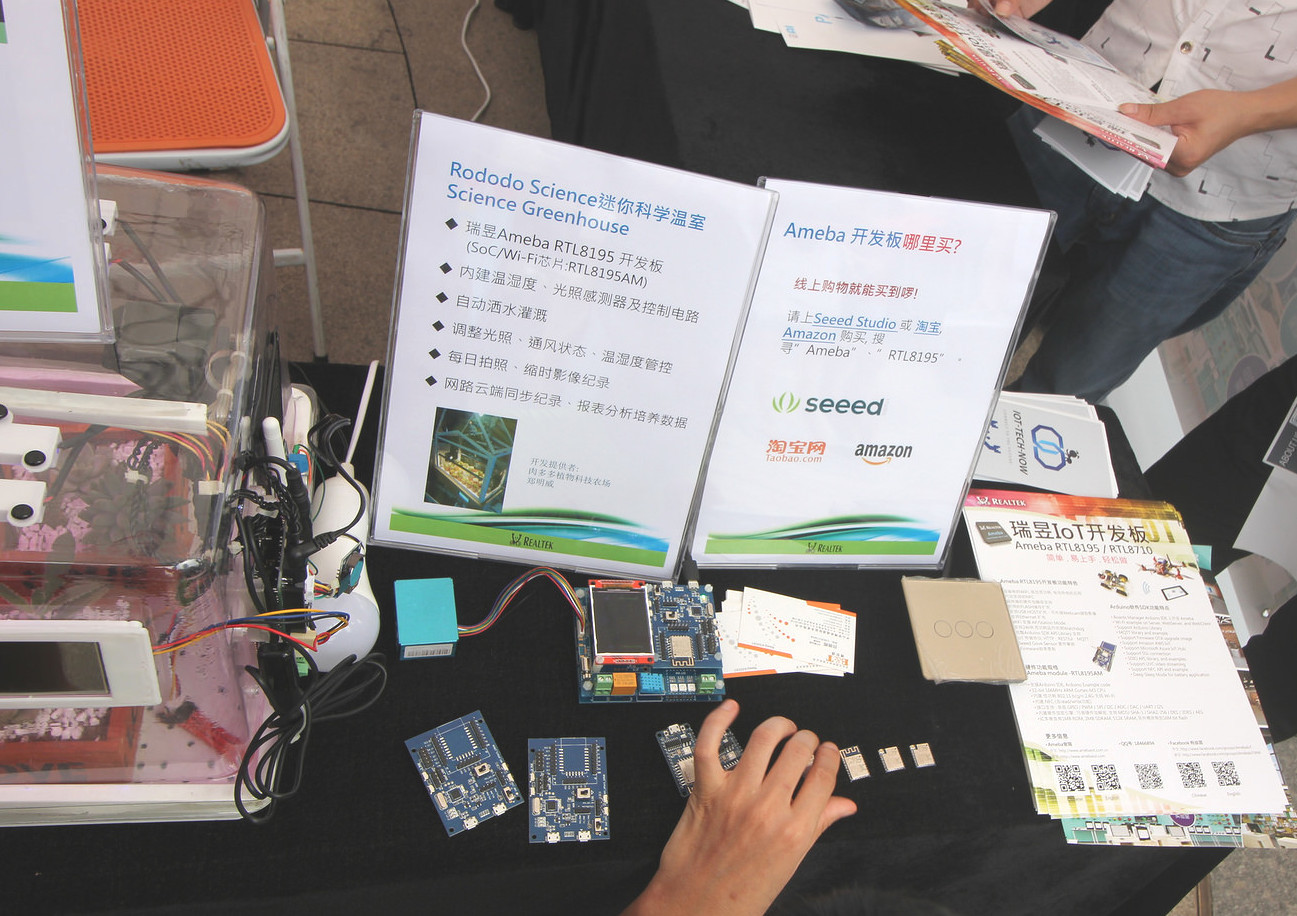
')
An interesting project on an autonomous greenhouse, controlled from a tablet via Wi-Fi. SoC Ameba (Realtek) is used as a controller
Control module example:
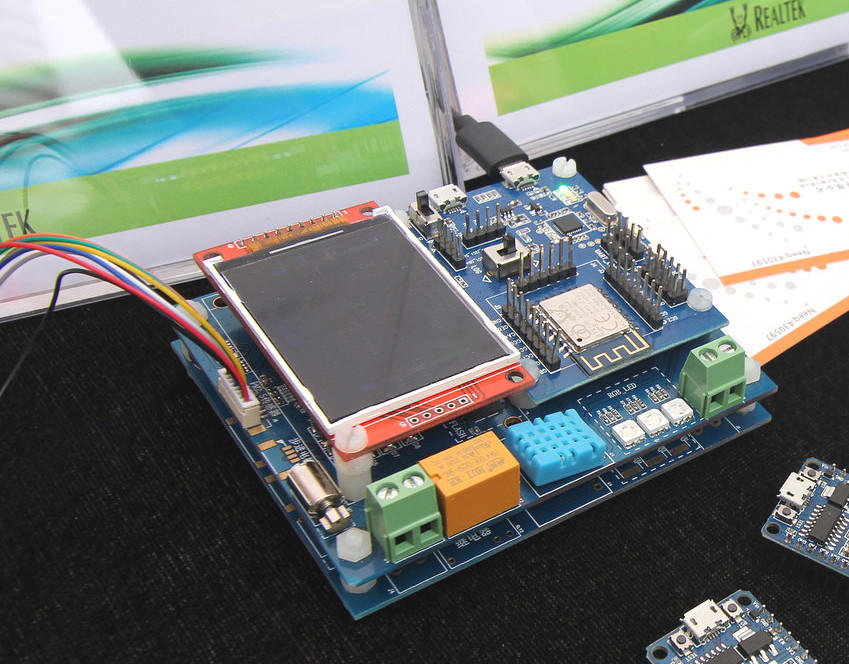
Video in action
Details (in Chinese) you can read here .
Ameba IoT

Ameba is Realtek's Internet of Things (IoT) solution. The greenhouse project is just one example of using the Ameba RLT8195 board.
Two Ameba RTL8195 and Ameba RTL8710 boards are provided:
Specifications
# 1 Ameba RTL8195 Board
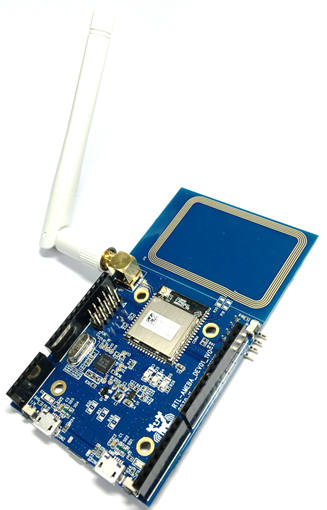
CPU
- 32-bit ARM Cortex M3, up to 166MHz
Memory
- 1MB ROM, 2MB SDRAM and 512KB SRAM
Key Features
- Integrated with 802.11 b / g / n 1x1 Wi-Fi
- NFC Tag with Read / Write Function
- 10/100 Ethernet MII / RMII / RGMII Interface
- USB OTG
- SDIO Device / SD card controller
- Hardware SSL engine
- Maximum 30 GPIOs
- 2 SPI Interfaces and support both master and slave mode
- 3 UART Interfaces including 2 HS-UART and one log UART
- 4 I2C Interfaces and support both master and slave mode
- 2 I2S / PCM Interfaces and support both master and slave mode
- 4 PWM interfaces
- 2 ADC interfaces
- 1 DAC interfaces
and lighter version:
# 2 Ameba RTL8710 Board

CPU
- 32-bit ARM Cortex M3, up to 83MHz
Memory
- 1MB ROM, 512KB SRAM and 1MB flash
Key Features
- Integrated with 802.11 b / g / n 1x1 Wi-Fi (HT20 only)
- SDIO Device
- Hardware SSL engine
- Maximum 17 GPIOs
- 1 SPI Interfaces and support both master and slave mode
- 2 UART Interfaces including one HS-UART and one log UART
- 1 I2C Interfaces and support both master and slave mode
- 4 PWM interfaces

CPU
- 32-bit ARM Cortex M3, up to 166MHz
Memory
- 1MB ROM, 2MB SDRAM and 512KB SRAM
Key Features
- Integrated with 802.11 b / g / n 1x1 Wi-Fi
- NFC Tag with Read / Write Function
- 10/100 Ethernet MII / RMII / RGMII Interface
- USB OTG
- SDIO Device / SD card controller
- Hardware SSL engine
- Maximum 30 GPIOs
- 2 SPI Interfaces and support both master and slave mode
- 3 UART Interfaces including 2 HS-UART and one log UART
- 4 I2C Interfaces and support both master and slave mode
- 2 I2S / PCM Interfaces and support both master and slave mode
- 4 PWM interfaces
- 2 ADC interfaces
- 1 DAC interfaces
and lighter version:
# 2 Ameba RTL8710 Board

CPU
- 32-bit ARM Cortex M3, up to 83MHz
Memory
- 1MB ROM, 512KB SRAM and 1MB flash
Key Features
- Integrated with 802.11 b / g / n 1x1 Wi-Fi (HT20 only)
- SDIO Device
- Hardware SSL engine
- Maximum 17 GPIOs
- 1 SPI Interfaces and support both master and slave mode
- 2 UART Interfaces including one HS-UART and one log UART
- 1 I2C Interfaces and support both master and slave mode
- 4 PWM interfaces
The first form factor is compatible with the Arduino UNO

(NFC antenna can be removed if it is not necessary).
For programming, the Arduino IDE is used. At the price of RTL8195 shawl is sold for ~ $ 25.
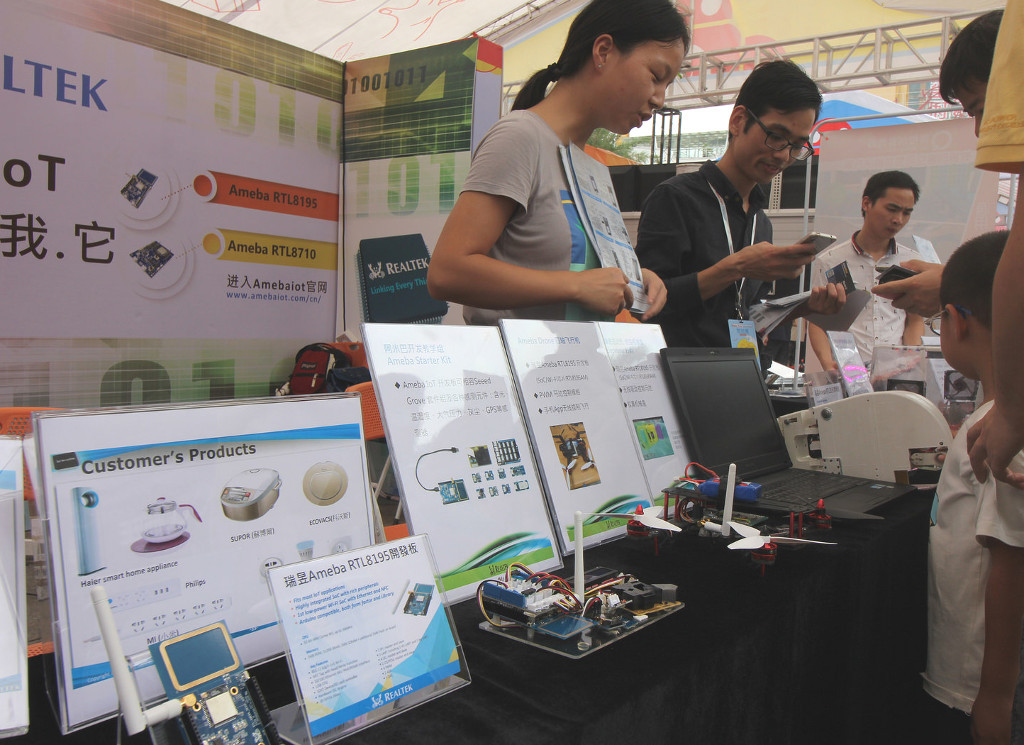
At the stand, there is the board itself, the Starter Kit, and also a quadrocopter based on the RTL8195 board ( more about the project of the copter ).
Details on the website www.amebaiot.com . The only (personally for me) minus is that “currently, Ameba supports Windows XP / 7/8 32 bits / 64 bits and MAC OS operating systems”
YwRobot studio
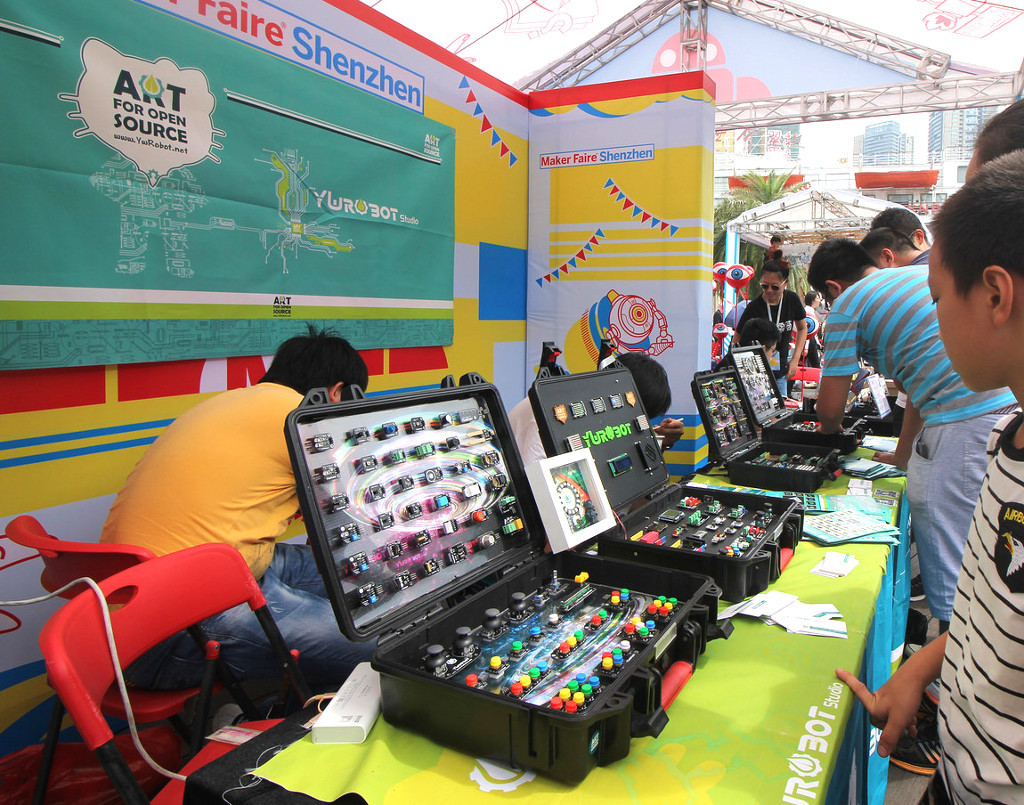
The Chinese company YWRobot, the motto of which is “Art for open source”, presented a set of various modules for creating beautiful arduino projects.
They really have a lot of peripherals - a list of components on the wiki . And the site of the company www.ywrobot.net .
Dobot manipulator
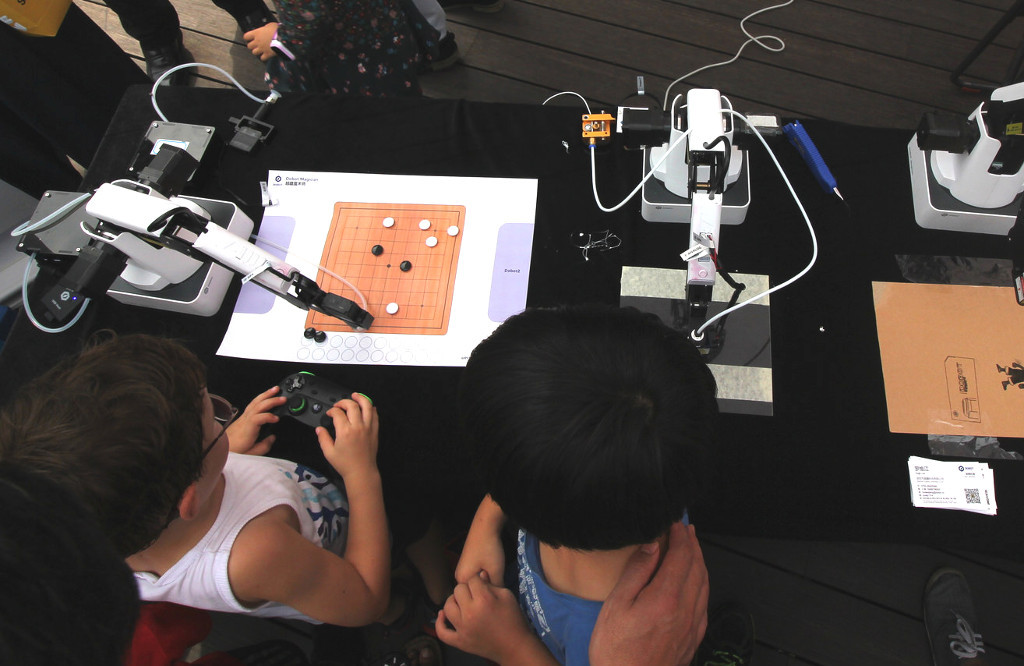
In the last part of the review, we visited the uArm manipulator stand. Let me remind uArm the project of enthusiasts from Shenzhen who wanted to make an accessible manipulator - and in March 2014 they successfully dialed over $ 250k on Kickstarter.
In July 2015, a group of 5 robotics engineers in Shenzhen created the Yuejiang company, the goal of which was to make a desktop robotic arm with industrial precision, but at an affordable price. And so it appeared - the Dobot project.
In November 2015, they successfully completed the project on Kickstarter and raised over $ 600k.
Video review of the manipulator
The cost of the Dobot Arm V1.0 manipulator - $ 899.00, accuracy ± 0.1 mm. Project site: dobot.cc
Ai.Frame - DIY humanoid robot
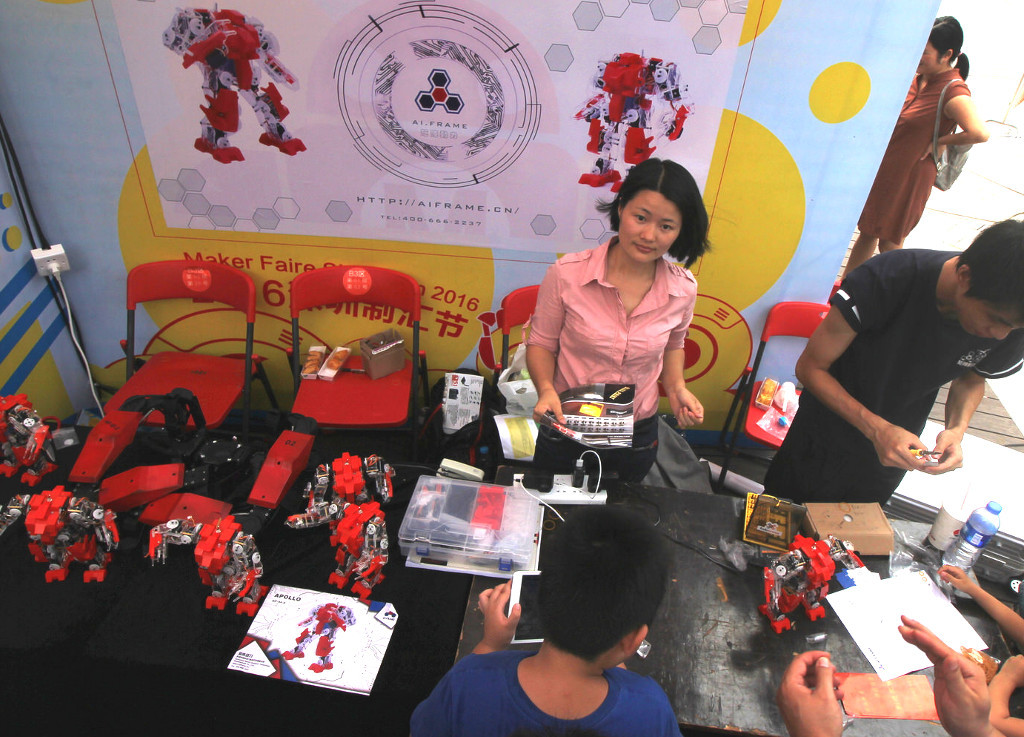
And now we are at the booth of another project, who successfully financed through Kickstarter - out of the declared $ 5k, more than $ 20k was raised - this is a DIY project of a humanoid robot - Ai.Frame. The authors of the project are two students Hu Jiaqi and Sun Zebo, the idea came to them in 2012, and for two years they were preparing to enter the kickstarter.
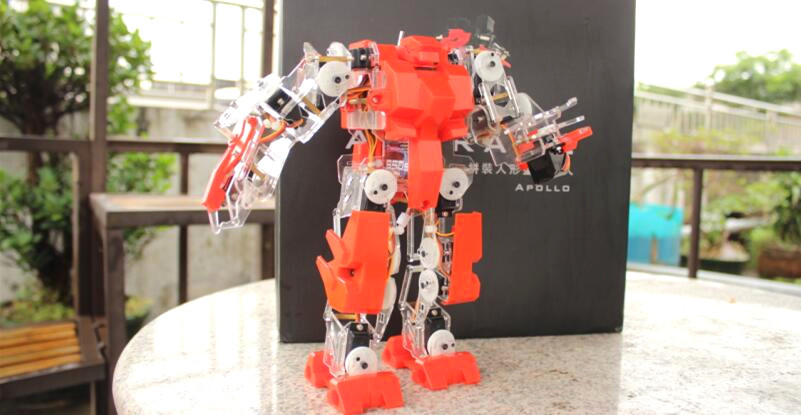
An example of a dancing robot
Robot assembly example
The price of the robot at the time of the campaign was $ 259, variations in the material - plywood, acrylic, in size. Now - $ 350 . Project website: aiframe.me
CCROV - underwater robot with 4K camera
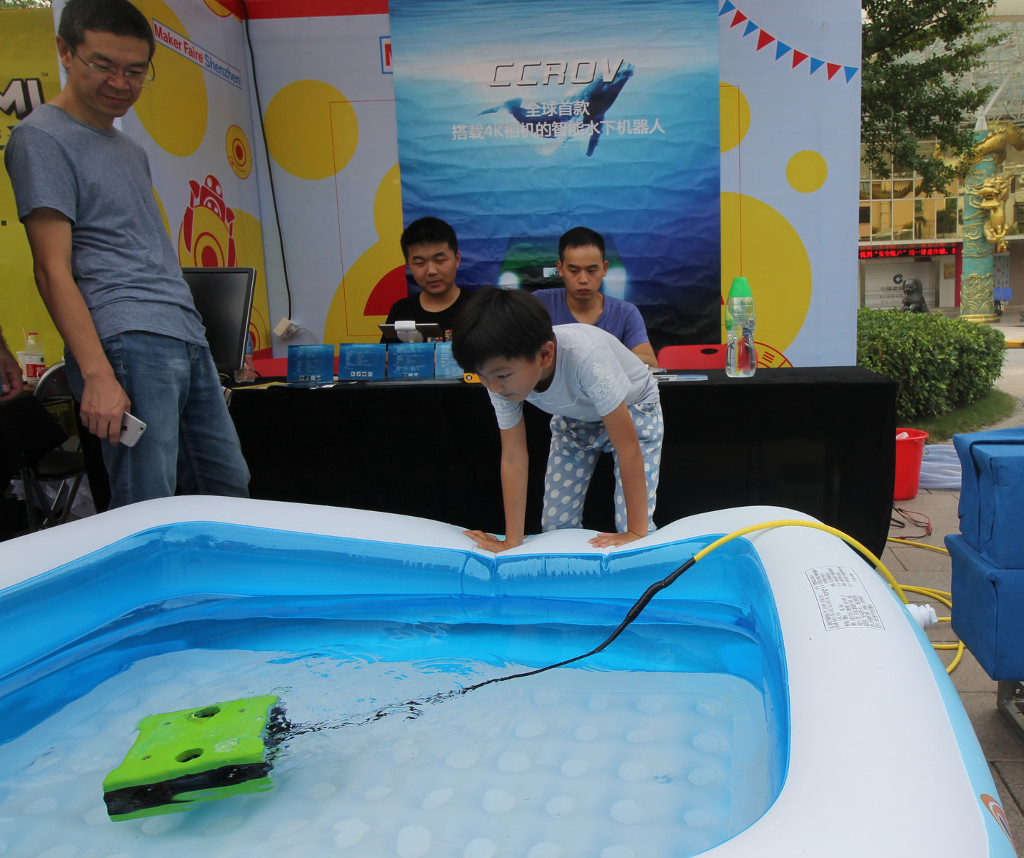
We were at project booths who had already successfully completed the Kickstarter campaign (in past years), but there is a project whose campaign is in progress and at the time of this writing - 3 days left until the end of the campaign.
This is a project of an underwater robot with a high resolution camera (4K) - CCROV . Of the declared $ 20k, more than $ 30k has already been raised.
The goal of the developers is to create a professional drone for underwater photography at an affordable price.
The stated characteristics of the camera

Video review about the capabilities of the robot and about the developers
Link to the campaign on Indiegogo .
Portalraider - electric skate

And on this stand, we see a skate with an electric drive. Perhaps not very original, but according to the stated characteristics - it has a speed of up to 30 km / h, and weighs only 4 kg.
WiFiBoy
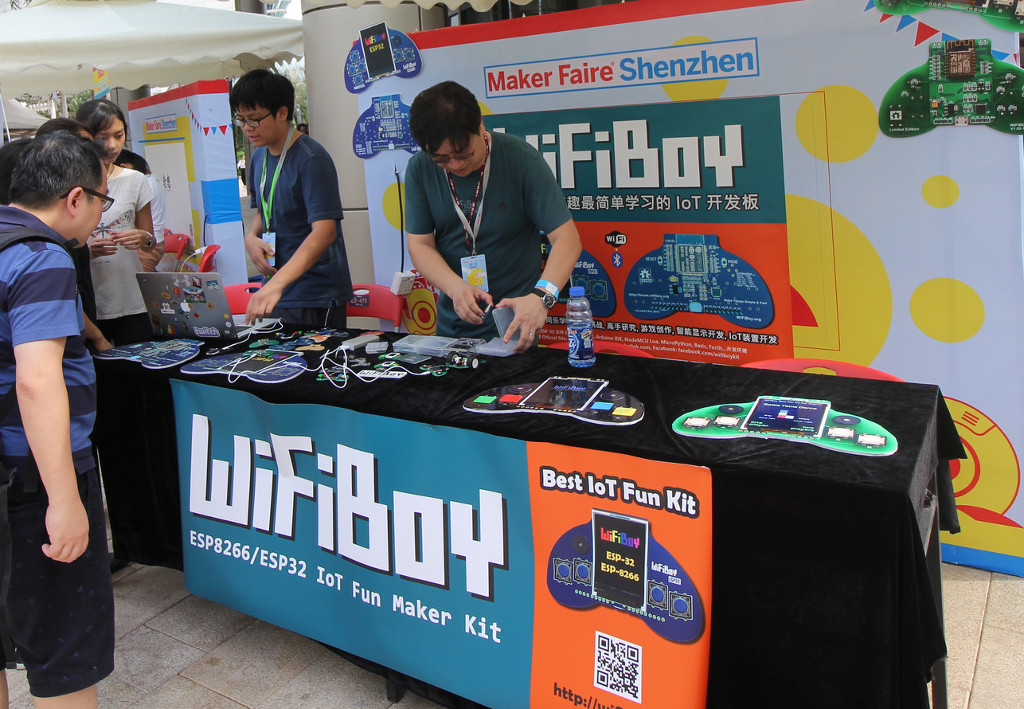
On this stand is a game console based on ESP8266. Demonstrate personally developer, and his son. By the way, precisely because of the son’s interest in the games, the father started developing this device.
In essence, this is a gaming platform - you can program games for which you can independently - an IDE Arduino is suitable for programming ESP.
Console Video Review
Playing Tetris
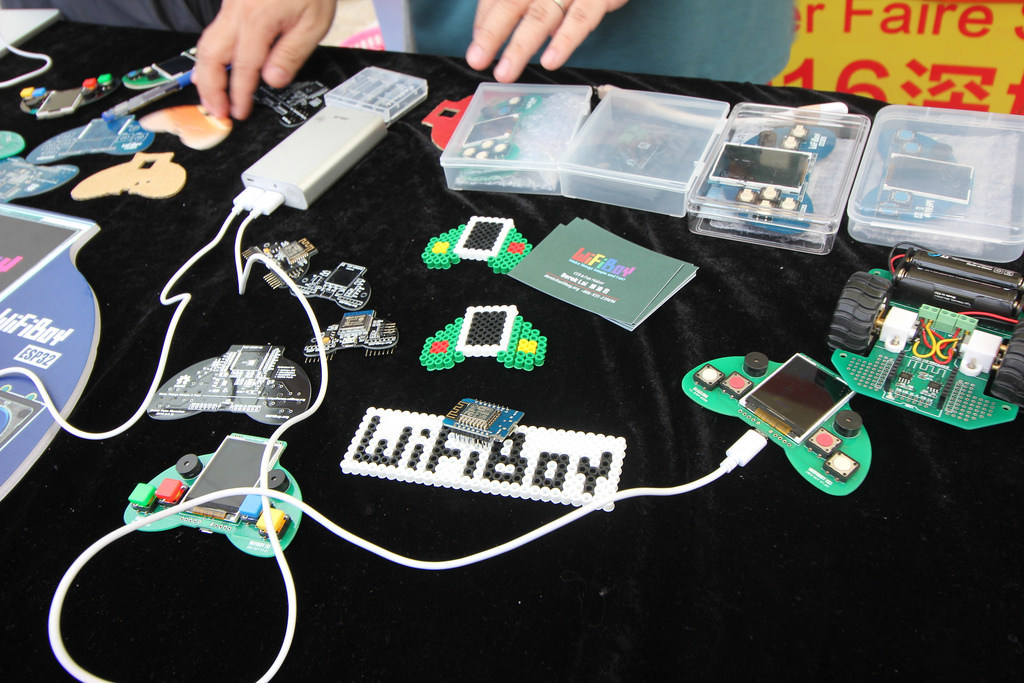
It is also possible to install on a mobile platform, and we get a wheeled robot:
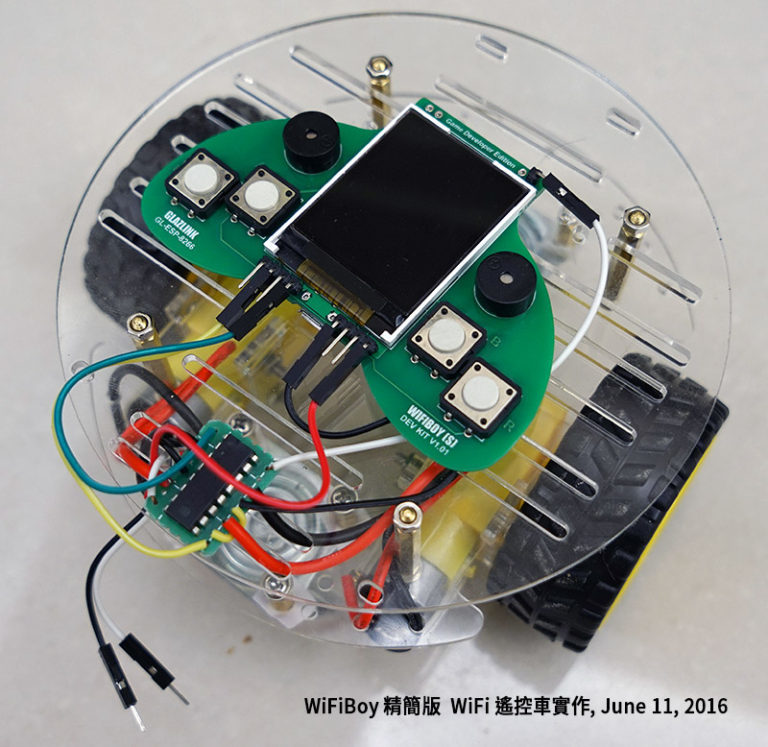
»Project site: www.wifiboy.org
dotstud.io
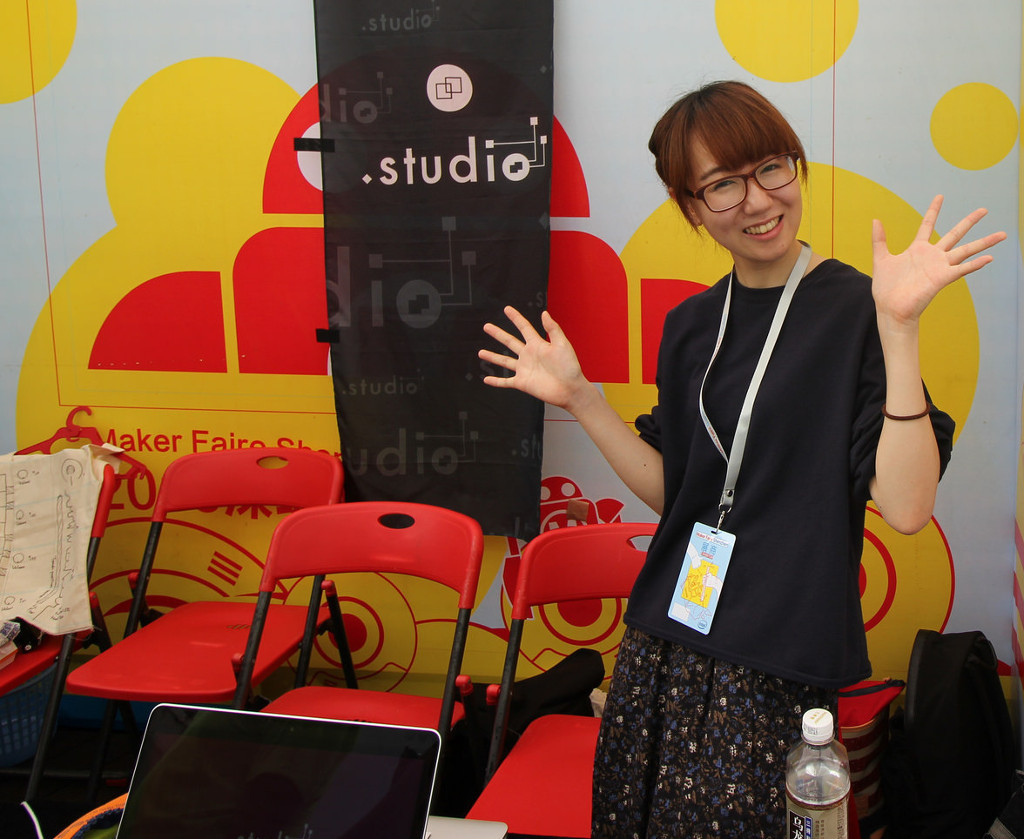
And here we come to the stand of the company .studio (dotstudio). If someone does not understand, then the Japanese woman in the photo) - the company arrived in Shenzhen from Japan.
The company was organized in July of this year, and the main activity is IoT. And in a sense, they are hackspaces - they organize activities for geeks in Tokyo.
They brought several of their IoT sets to the exhibition.
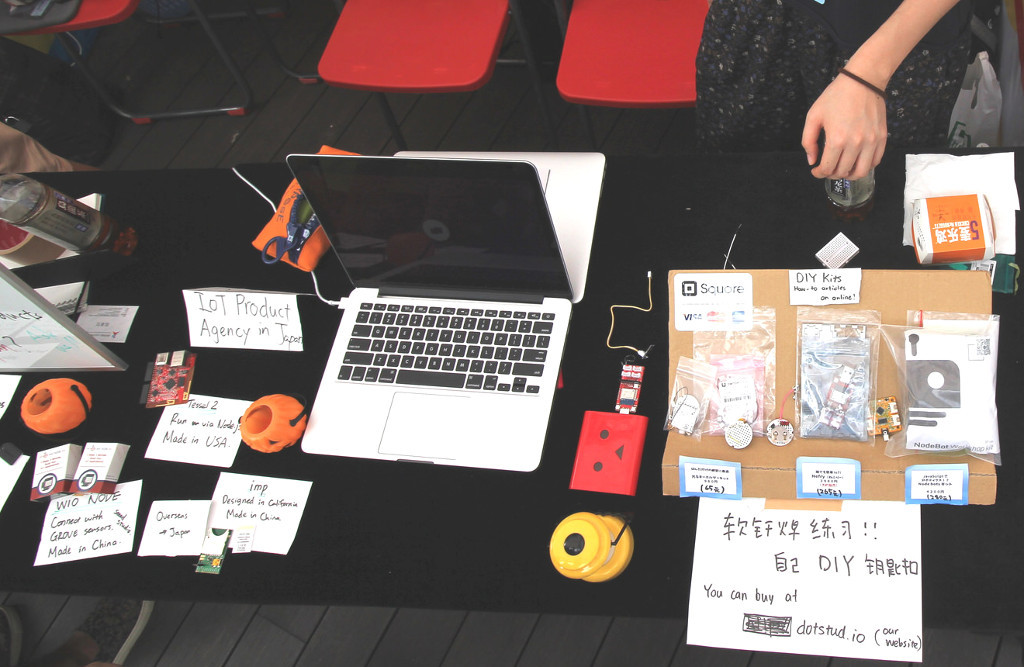
»Company website: dotstud.io
MIERUNDES
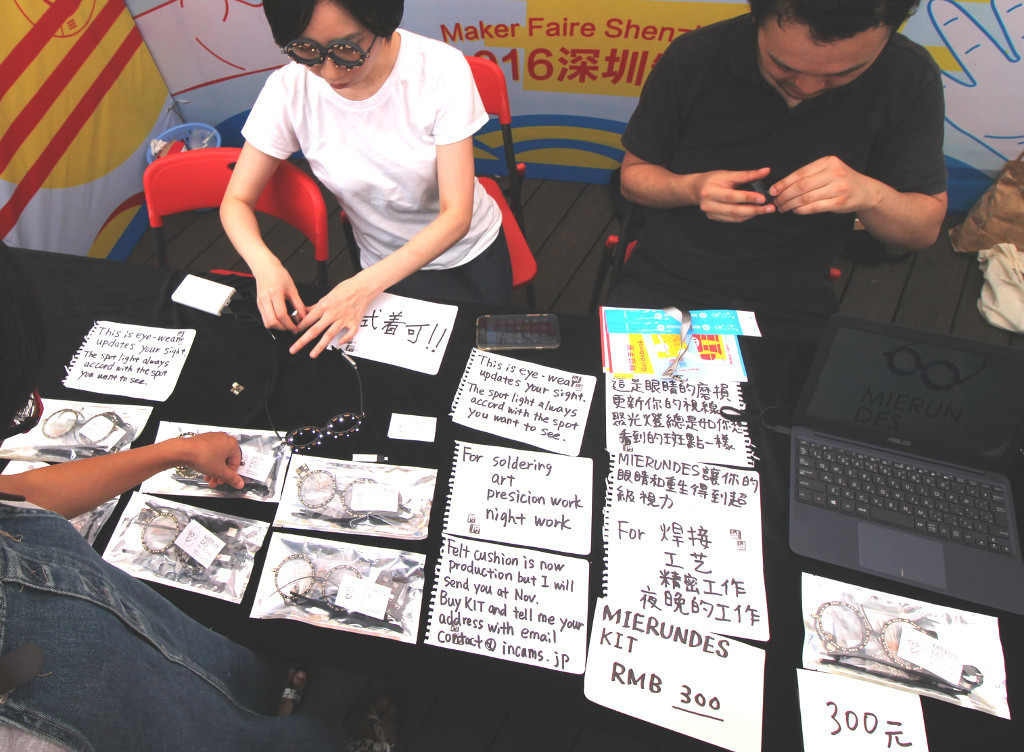
Next to the booth - just from the Japanese guys, the project Mierundes.
These are glasses with LEDs - a set for self-assembly, an open-hardware project. By the way, MIERUNDES in Japanese means "I can see."
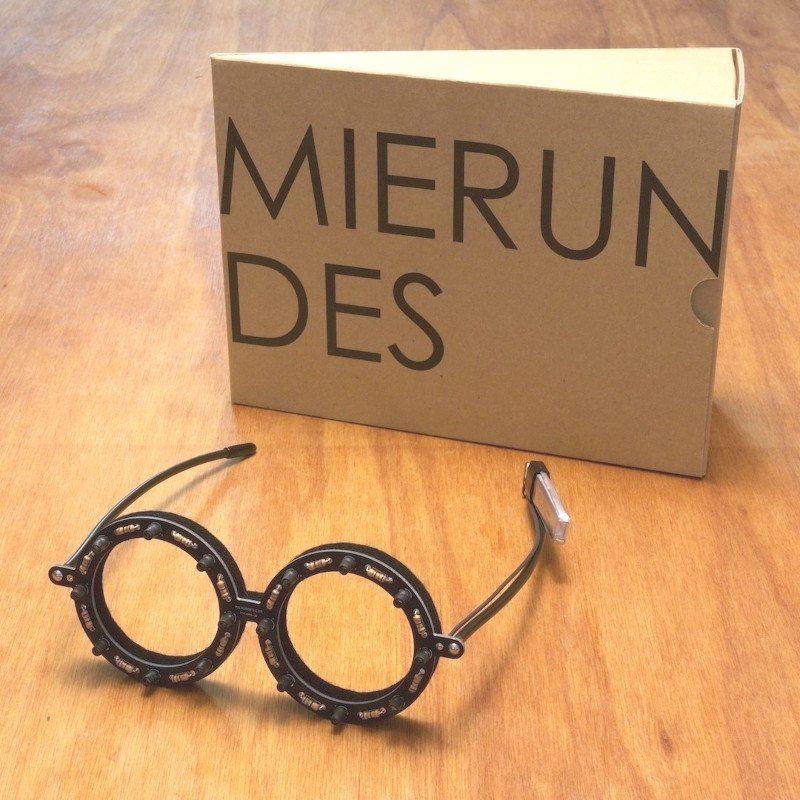
The authors invest in the project of light-glasses not only help in the illumination of the working area or art, as well as the educational theme - for soldering, studying the initial electronics, the assembly of the set takes from 1 to 3 hours. Detailed assembly instructions (with pictures, and in Japanese).
Photo set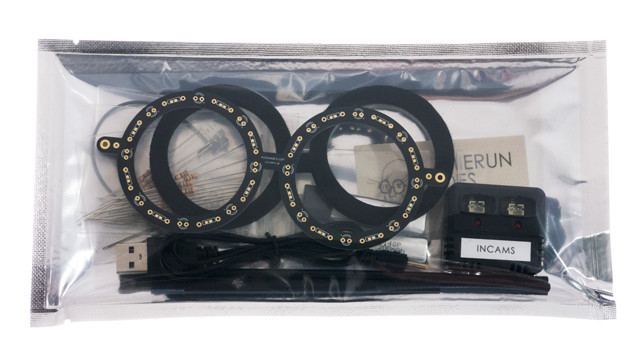



»Project website: mierundes.com
Meccanoid

At this booth, we see a man who sort of repairs the clock? But in his hands there is not a clock - but a small vibrobot, and little white dots on the table are also vibrobotes.
White dots closer

But just to the right we see a humanoid robot - this is a robot from the family of designers Meccano from the company Spin Master. There are two versions of robots - G15 and G15KS with a height of 61 and 122 cm, respectively (the characteristics of these models ). Price low designer robot - about 20 tr. (moreover, since this is a constructor, then dinosaur assembly is possible)
On the site of the designer there is a section Meccanoid Open Source Programming , in which the exchange protocol with the modules, the Arduino library, and a sample project are laid out. That is, this constructor, if desired, can be modified.
Robots closer

For some reason, this little robot reminded me of a robot from the classic film "Short Circuit".
»Website designer: www.meccano.com
Young Makers & ChangeMakers
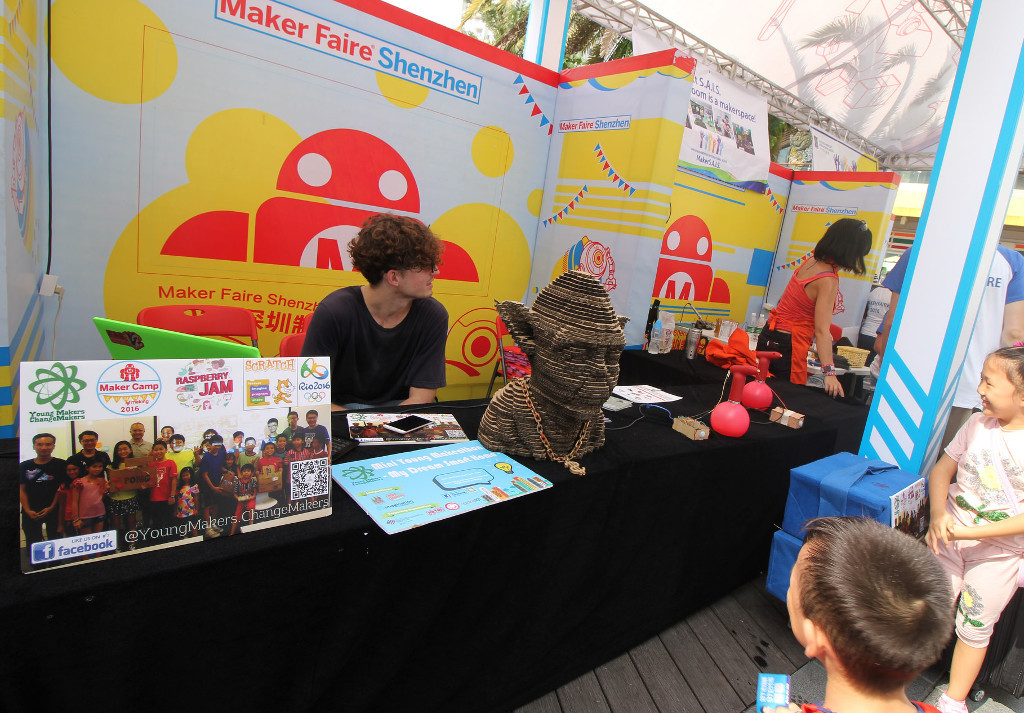
At this stand, we see Yodo) - in fact, this is the stand from Young Makers & ChangeMakers - a club for attracting young people to work.
Initially, the initiative began in Hong Kong’s hackspace: Hong Kong
»Facebook Page: YoungMakers.ChangeMakers
Hackspace LitcheeLab
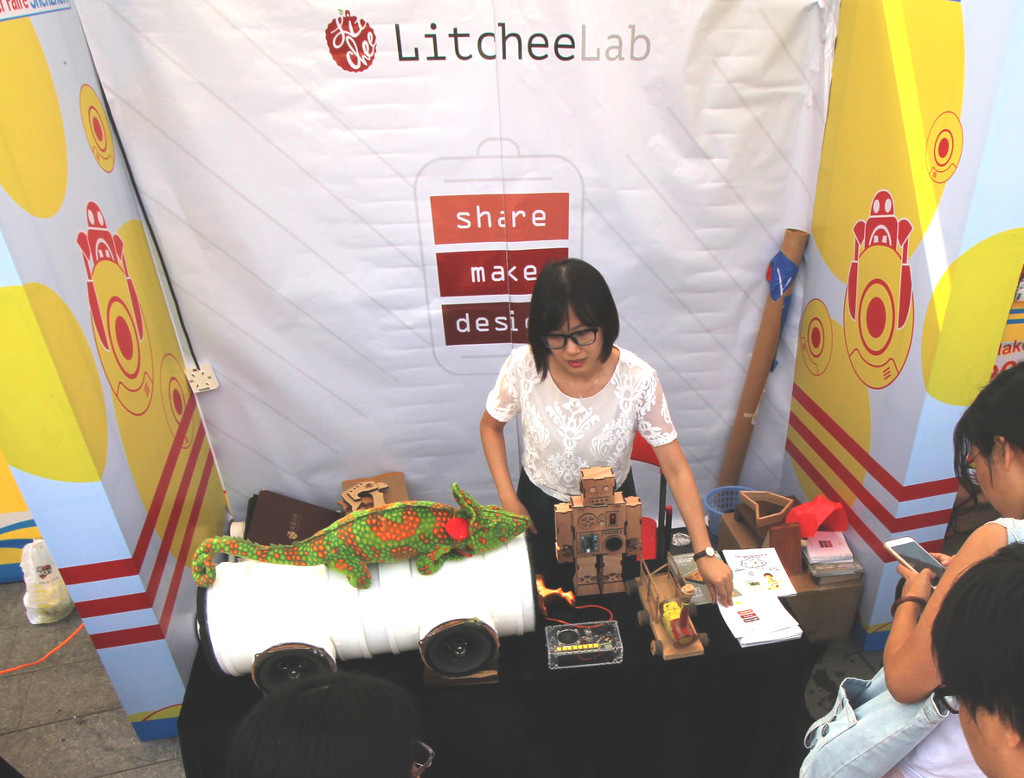
And here we come to the stand of local hackspace (makerseys) LitcheeLab . Let me remind you that it was thanks to one of its participants that we had the opportunity to take a photo tour of MakerFaire.
At the stand, we see a fragment of a plastic sewage pipe, but as it turned out - quite a good column - the project of the participant Janek Mann , he is from Germany.
By the way, Janek is the author of a project to create an English-Chinese dictionary for makers, hobbyists who communicate with colleagues from China (Shenzhen) - link (Basic terms, Mechanical Terms, Motor Suppliers, PCB terms, Product Design, Taobao Cheatsheet, Taobao Shops ).
From the projects - presented DIY Talking Robot) Hand-made steam locomotive and DIY project synthesizer:
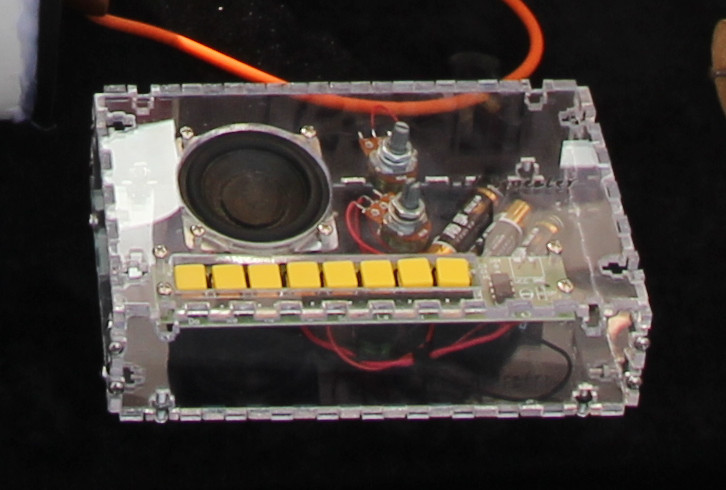
» Hackspace website: www.litchee.cn
At this - the end of the 2nd part - to be continued ..
And thanks to targence (from the Litchee Lab hackspace) for providing the material .
Source: https://habr.com/ru/post/398659/
All Articles